
- Home Page
- Accepted
Paintings & Copies - Doubtful
Attributions - Doubtful Textual References
- Alternative
Titles - Collectors &
Museums - Bibliography
- Search Abecedario
- Watteau &
His Circle
X. Danseurs et musiciens
Entered June 2020
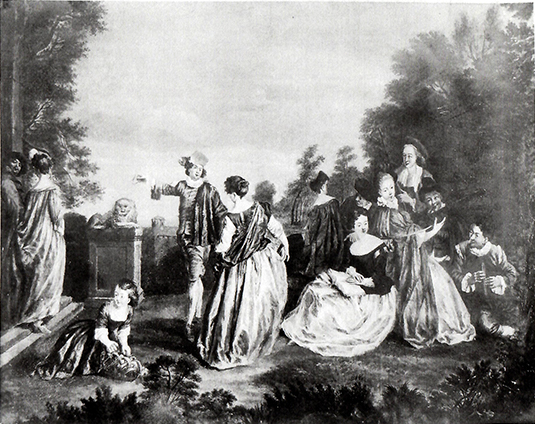
Whereabouts unknown
Oil on canvas
61 x 50 cm
SELECT BIBLIOGRAPHY
Ferré, Watteau (1972), 2: cat. P 44.
REMARKS
This picture is known through a photograph in the Service de documentation, Département des peintures, Musée du Louvre. Although Ferré would give the painting to the so-called School of Watteau, it is nothing more than a pastiche of elements taken from the Jullienne Oeuvre gravé. It is not clear when or where it was painted, but it is evidently at a far remove from Watteau and his immediate satellites.
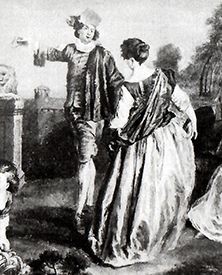
Unidentified artist, Danseurs et musiciens (detail).
.jpg)
Nicolas Henri Tardieu after Watteau, Le Plaisir pastoral (detail), engraving.
.jpg)
Gerard Jean-Baptiste Scotin after Watteau, L’Indifférent (detail), engraving.
The dancers placed prominently at the center of this composition are a composite drawn from two sources. The woman is taken from Tardieu’s engraving after Le Plaisir pastoral, but her companion is based upon Scotin’s engraving after L’Indifférent.
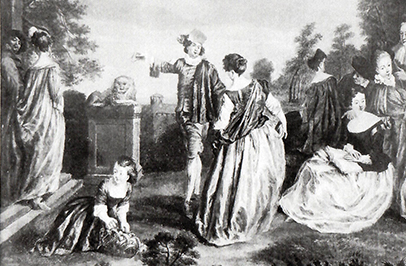
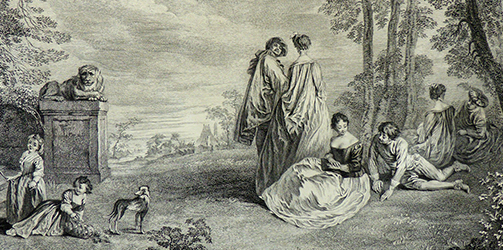
Jean Michel Liotard after Watteau, L’Entretien amoureux (detail), engraving.
Much of Danseurs et musiciens is dependent on Liotard’s engraving after L’Entretien amoureux. This includes the man and woman seen from behind at the left side, the young child on the terrace floor, and even the lion on the balustrade. Likewise, elements to the right of center are taken from that engraving, including the woman seated on the ground and the tête-à-tête couple sitting behind her, exchanging confidences.
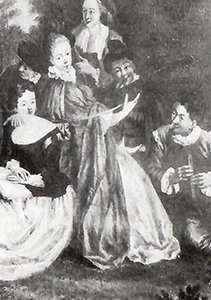
Unidentified artist, Danseurs et musiciens (detail).
.jpg)
Nicolas Henri Tardieu after Watteau, Le Plaisir pastoral (detail), engraving.
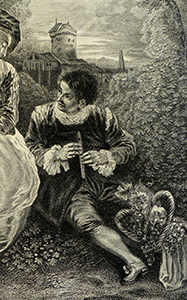
Gérard Jean-Baptiste Scotin after Watteau, La Lorgneuse (detail), engraving.
Last, the woman playing an archlute is based on Audran‘s engraving after Watteau’s La Finette, while the flutist sitting on the ground is derived from Scotin’s engraving after La Lorgneuse.
The painter’s entire reliance on engraved sources says much about his business. He did not even try to join the figures together into meaningful groups but, instead, lined them up across the picture.